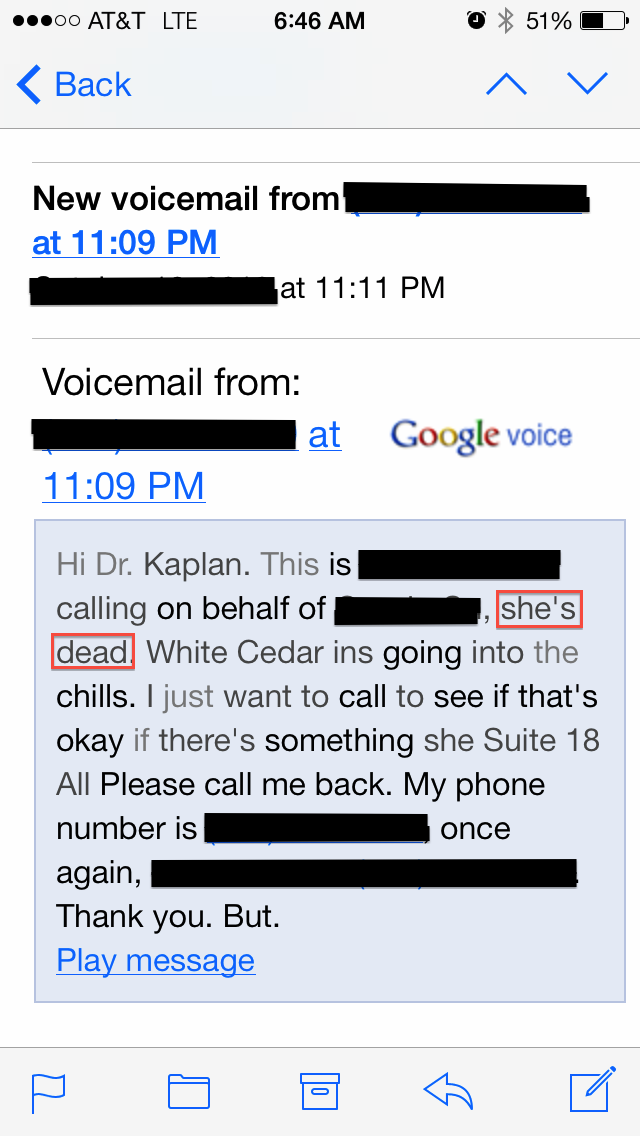I recently operated on a patient in our accredited in-office OR and after she went home, I gave her my cell phone number as I do for all of my patients. But since I moved from Louisiana and still have a Louisiana area code, I gave her my Google Voice phone number.
If you’re not familiar with Google Voice, this is how it works. You choose a phone number from a list provided on the Google Voice website and then you can have that phone number forwarded to your existing cell phone. The beauty is that I now have a local phone number for patients that’s directed to my current cell phone. No need to purchase a phone locally. But Google Voice also provides another feature. When a patient calls my Google Voice phone number and leaves a message, you can do one of two things. You can listen to the voice mail as you would with any other phone but you also receive an email with the voice mail transcribed so you can read the voice mail. And this is when things got bizarre the evening after the operation I mentioned above.
The night after the operation, I received a call from my patient’s caretaker. Once I got to the phone, the call had already gone to voice mail. Without listening to the voice mail, I called the patient and caretaker back and answered their questions. No major issues. She’s was doing great overall. The next morning when I checked my email, I noticed the Google Voice transcription of the voice mail from the previous night. This is what the transcription showed:

I’m so thankful I didn’t see this transcribed version of the voice mail and just called the patient back first! I understand voice transcription isn’t perfect but to receive an email saying your patient is dead is shocking to say the least. But knowing she is doing fine makes this transcribed voice mail more bizarre than tragic. If Google is reading this, please don’t lower me in your searches – I understand this technology is a work in progress.
Click here for the original blog post written by Dr. Jonathan Kaplan for BuildMyBod.?




